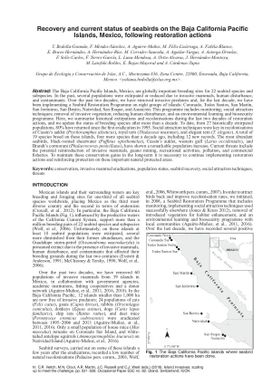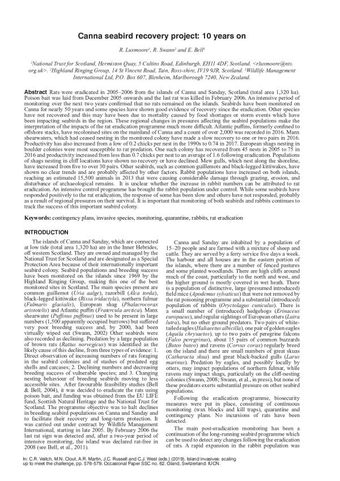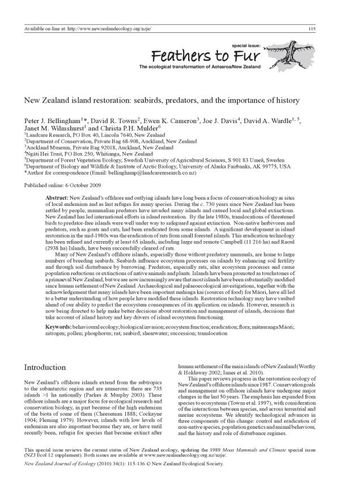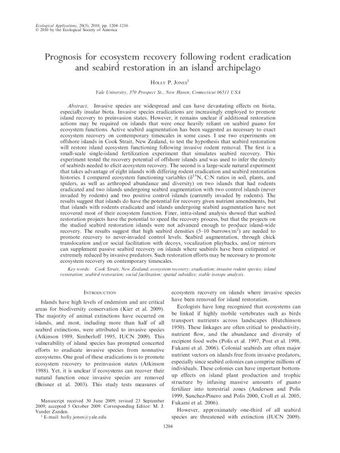Recovery and current status of seabirds on the Baja California Pacific Islands, Mexico, following restoration actions
- Description:
- The Baja California Pacifc Islands, Mexico, are globally important breeding sites for 22 seabird species and subspecies. In the past, several populations were extirpated or reduced due to invasive mammals, human disturbance, and contaminants. Over the past two decades, we have removed invasive predators and, for the last decade, we have been implementing a Seabird Restoration Programme on eight groups of islands: Coronado, Todos Santos, San Martín, San Jerónimo, San Benito, Natividad, San Roque, and Asunción. This programme includes monitoring; social attraction techniques; removal of invasive vegetation; reducing human disturbance; and an environmental learning and biosecurity programme. Here, we summarise historical extirpations and recolonisations during the last two decades of restoration actions, and we update the status of breeding species after more than a decade. To date, from 27 historically extirpated populations, 80% have returned since the ?rst eradication in 1995. Social attraction techniques were key in recolonisations of Cassins auklet (Ptychoramphus aleuticus), royal tern (Thalasseus maximus), and elegant tern (T. elegans). A total of 19 species breed on these islands, four more species than a decade ago, including 12 new records. The most abundant seabirds, black-vented shearwater (Puffnus opisthomelas), Cassins auklet, western gull (Larus occidentalis), and Brandts cormorant (Phalacrocorax penicillatus), have shown a remarkable population increase. Current threats include the potential reintroduction of invasive mammals, guano mining, recreational activities, pollution, and commercial ?sheries. To maintain these conservation gains in the long-term it is necessary to continue implementing restoration actions and reinforcing protection on these important natural protected areas.
- Display date:
- 2019
- Location:
- Pacific Region
- Collections:
- Secretariat of the Pacific Regional Environment Programme (SPREP)
- Publisher:
- International Union for Nature Conservation (IUCN)
- Content partner:
- Secretariat of the Pacific Regional Environment Programme (SPREP)
- Availability:
- Not specified
-
Copyright status: All rights reservedFind out more about what you are able to do with this itemThis item is all rights reserved, with means you'll have to get permission from Secretariat of the Pacific Regional Environment Programme (SPREP) before using it. For more information, please see our use and reuse page.What can I do with this item?Non-infringing useNZ copyright law does not prevent every use of a copyright work, and this item may be hosted by an international institute or organisation. You should consider what you can and cannot do with a copyright work.No sharingYou may not copy and/or share this item with others without further permission. This includes posting it on your blog, using it in a presentation, or any other public use.No modifyingYou are not allowed to adapt or remix this item into any other works.No commercial useYou may not use this item commercially.
Related items
Welcome and warm Pasifik greetings
The information on this site has been gathered from our content partners.
The names, terms, and labels that we present on the site may contain images or voices of deceased persons and may also reflect the bias, norms, and perspective of the period of time in which they were created. We accept that these may not be appropriate today.
If you have any concerns or questions about an item, please contact us.



